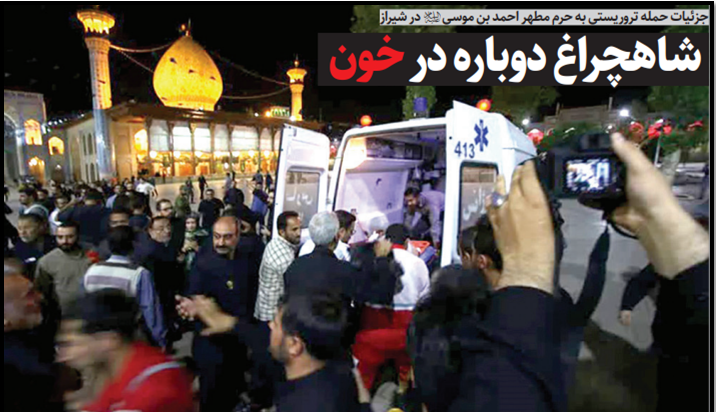On Aug. 13, 2023, a gunman killed one person and injured eight others at the Shahcheragh shrine in Shiraz, Fars province. Security forces and shrine workers reportedly detained the assailant, Tajik national Rahmatollah Nowruzof. An injured member of the security forces died at the hospital two days later, which raised the death toll to two. Authorities detained at least 10 foreign nationals allegedly connected to the attack and discovered a safe house. The plot was the second targeting the Shiite shrine in less than one year. In October 2022, ISIS claimed an attack that killed 13 people.
A wide spectrum of groups – Sunni extremists, ethnic separatists, Marxists, and monarchists – have launched dozens of attacks against Iran since the 1979 revolution. Many occurred during the tumultuous first decade of the Islamic Republic. Terrorist attacks were less frequent in the 21st century.
Related Material: History of Terrorism Against Iran
The shooter was apprehended in the evening after firing 11 shots, according to Yadollah Bouali, the provincial commander of the Islamic Revolutionary Guard Corps (IRGC). He had an assault rifle and eight magazines with 240 bullets.
A “painful end awaits the perpetrators,” Foreign Minister Hossein Amir-Abdollahian warned in a tweet on August 13. President Ebrahim Raisi ordered the interior ministry and the provincial governor to investigate the attack. On August 14, he condemned the “the enemies of dear Iran” that “showed their ugly face by committing another bloody crime.” The Ministry of Intelligence and Security and other agencies “must quickly and accurately identify the visible and hidden hands of this heinous crime and bring them to justice,” Raisi added in a statement. Parliament also announced a probe.
The IRGC's spokesperson pledged revenge and implicated “numerous foreign intelligence services” in the attack. “The enemy has been seeking multiple objectives in the Shahcheragh terror incident: to cause sectarian and ethnic divides, and to drive a wedge between Iran and its neighbors,” Brig. Gen. Ramezan Sharif said on August 15. Bouali claimed that Israel, Iran's archenemy, was connected to the “terror network” behind the plot.
Qods newspaper: "Shahcheragh in Blood Again"
The U.N. Security Council condemned the “heinous and cowardly terrorist attack” and urged all member states to cooperate with Iran in holding perpetrators, organizers, financiers, and sponsors of terrorism accountable. The European Union also condemned the shooting.
No group immediately claimed responsibility. On August 14, Interior Minister Ahmad Vahidi said that the attacker was working for a “network” abroad. Mohammad Hadi Imanieh, the governor of southern Fars province, accused ISIS. It was “revenge for the [July 2023] execution of two terrorists” allegedly connected to the 2022 shooting at the shrine, he posited. On August 16, Tasnim News Agency reported that the attacker was a member of ISIS and was trained in Afghanistan. The Sunni extremist group regarded Shiites, who accounted for about 90 percent of Iran’s population, as apostates. Iran viewed ISIS as a terrorist group and took a prominent role in fighting it in Iraq and Syria.
The Shahcheragh shrine housed the remains of the brothers of Imam Reza, the eighth Shiite imam born in the 8th century. It was a popular pilgrimage site in Iran. For years, ISIS targeted Shiite shrines and mosques across the Middle East. It considered them forms of idolatry.
ISIS launched its first attacks against the Islamic Republic in 2017. Six gunmen killed 12 people in a twin attack on Parliament and the mausoleum of Ayatollah Ruhollah Khomeini in Tehran. ISIS persistently targeted Shiites despite the collapse of its territorial caliphate in 2019. In July 2023, ISIS claimed responsibility for a bombing that killed at least six people near the Shrine of Zainab just outside of Damascus, Syria.


